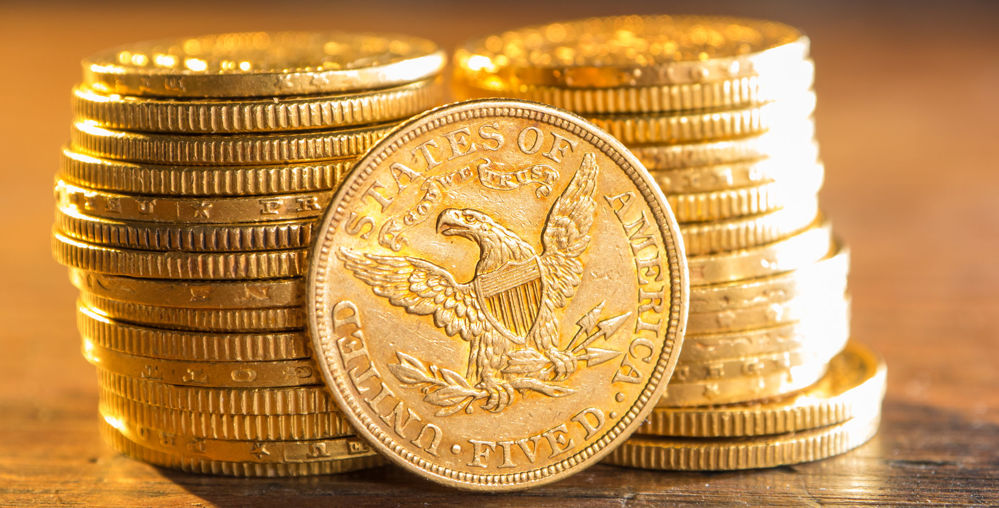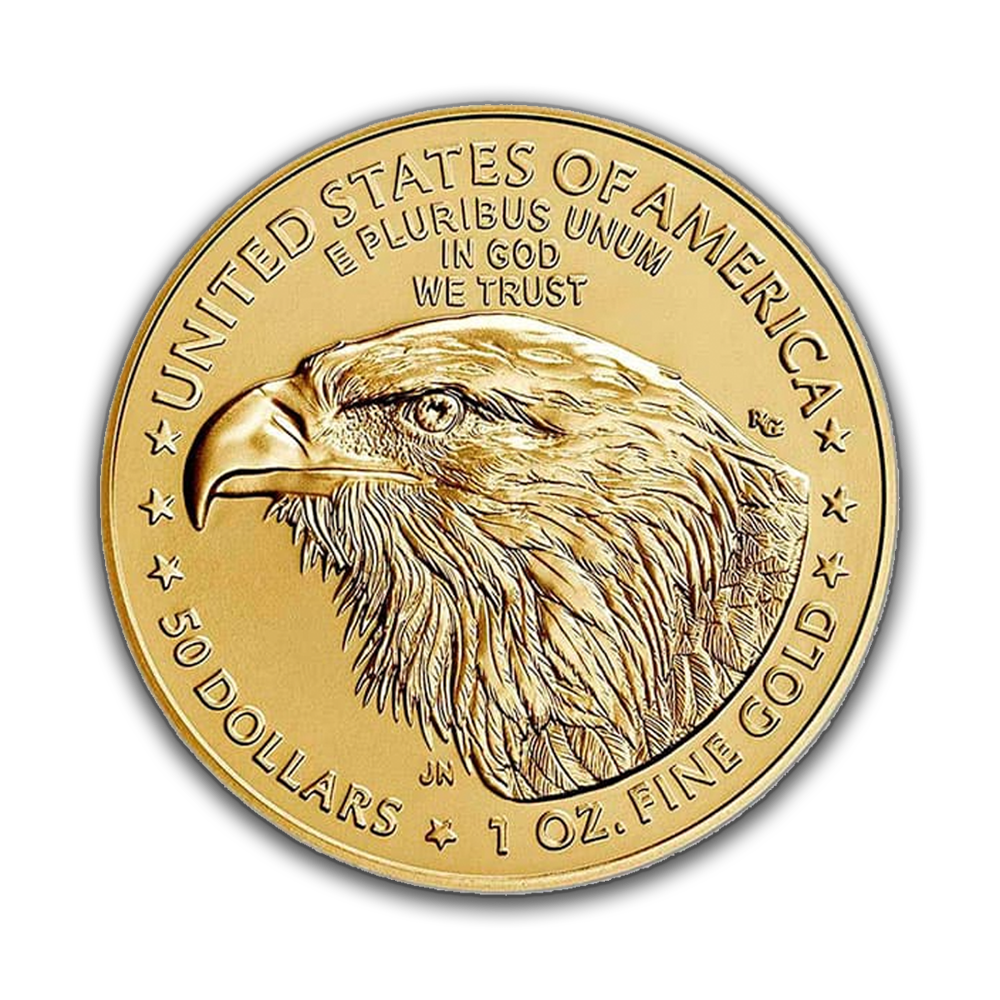Posted on January 05, 2022


With the price of gold nearly $2,000 per ounce, it puzzles many people that the American eagle 1 oz gold coin has a paltry $50 face value. Why is the face value so low if its actual value is substantially more?
It’s an interesting question and one that has both simple and more nuanced reasons. To find out exactly why U.S. bullion coins have such a low face value, continue reading!
First, it’s important to distinguish between the face value and intrinsic value.
Face value is the dollar amount assigned to a particular coin by the government, which can never change: Face value is entirely arbitrary. A quarter is always going to have a face value of 25 cents. It doesn’t matter whether that quarter is a modern one minted of 91.7% copper and 8% nickel, a pre-1964 quarter made of 90% silver and 10% copper, a monster 5 oz America the Beautiful coin, or even an 1804 draped bust quarter (auction value about $150,000). If you use any of these to pay for a candy bar, they’re worth 25 cents.
Intrinsic value, which is a moving target, is how much an asset is worth in and of itself. For bullion coins, intrinsic value typically refers to the “melt value” or the weight of precious metals in the coin and the current spot price of that metal. In the case of a quarter, the intrinsic value can be significantly higher than 25 cents if it’s a typical silver quarter minted prior to 1965 (these were made with 90% silver) or if it has other numismatic (collectible) values.
While that 90% silver quarter could still be used in a vending machine, it would make far more sense to sell it for melt value since the intrinsic value of its silver far exceeds 25 cents.
So you can see from this example, a government assigns face value at the time of minting. It has absolutely no effect on a coin’s intrinsic value, which is set by market forces.
Again, we’re faced with the question of why a gold coin that’s intrinsically worth far more than $50 would have a face value that’s just a tiny fraction of its actual value.
The simple answer is that Congress has established a very strict set of rules that denote both the currency’s sizes and face values. Those numbers don’t actually reflect the intrinsic values of the metals being used, nor are they updated to track the ever-changing prices of precious metals. As a bureau of the U.S. Department of the Treasury, the Mint has no option but to comply with the regulations imposed by Congress.
 Bullion coins aren’t meant to be treated like ordinary coins
Bullion coins aren’t meant to be treated like ordinary coinsSince the U.S. Mint has to do what Congress says, there has to be a face value on all coins that the government will stand behind. However, unlike ordinary coins that are meant to be minted and circulated to the public, bullion coins are non-circulating. Members of the public can buy bullion coins (for example, the American eagle 1 oz gold coin is training for just over $2,000 at the time of writing) made by the U.S. Mint, but they’re designed to be valued by their metal content, not their face value. And they’re priced accordingly. No one in their right mind would spend $2,000 for a bullion coin worth $50.
If, in theory, the government allowed for bullion face values to be higher, it could create a very costly problem for them. Should the face value of a U.S. bullion coin ever exceed its intrinsic value, the public would respond rapidly to arbitrage the difference in valuations. This is an economic observation called “Gresham’s law,” which states, “Bad money drives out the good.”
In other words, if there are two similar coins in circulation simultaneously (say, pre-1964 90% silver quarters and post-1964 0% quarters), people will use the silver-free quarters for payments. They’ll hoard and melt the 90% silver quarters and sell the precious metal.
Consider another example: In May 2021, gold’s spot value hit an all-time high of $2,063 per ounce. If the U.S. Mint based face value on intrinsic value, we would’ve seen several $2,063 American gold eagle coins minted at that time. However, today’s spot price of gold is a bit lower, about $1,800. Should people who bought those $2,063-face-value May eagles be allowed to exchange them for dollars, buy another 1 oz American eagle at today’s price, and pocket the difference?
Obviously, the U.S. Mint doesn’t want to create that problem. Since spot prices are constantly in flux, and face values are forever, the obvious solution is to put a low face value on a coin that’s never meant to be used at the corner store and price it based on its intrinsic value.
These low face values help ensure non-circulating bullion is used for its intended purpose as an investment or a collectible and never treated like an ordinary coin used to buy goods and services.